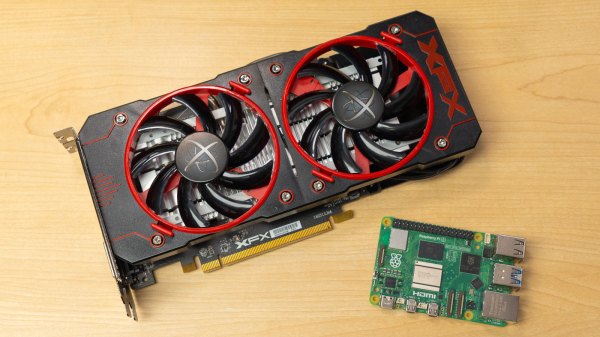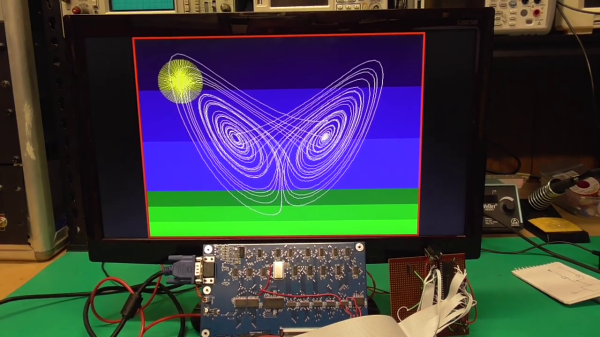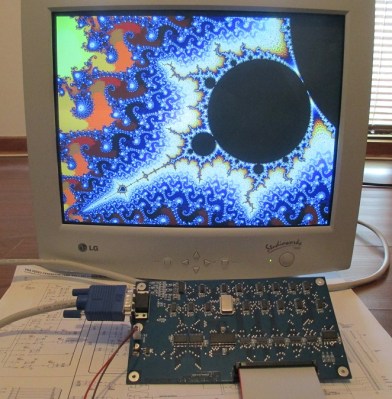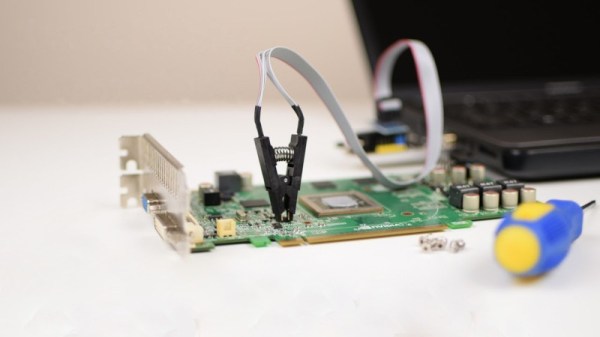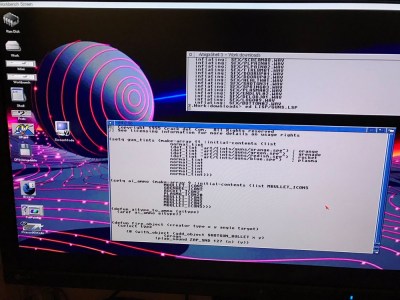The Raspberry Pi line is full of capable compact computers, but they’ve never been the strongest in the bunch when it comes to graphical output. Nor have they been particularly expandable in that regard. However, that’s all beginning to change, with [Jeff Geerling] reporting success getting external GPUs to work on the Raspberry Pi 5.
Unlike previous Raspberry Pis, the Raspberry Pi 5 has a less quirky implementation for its PCI Express bus. Previous editions have thrown up issues when trying to work with GPUs, but [Jeff] has found much more success this time around. He’s gotten an AMD RX 460 to work with the setup, and has got it running quite a bit of the glmark2 test regime. He’s working on a variety of other AMD cards too, but suspects NVidia parts could be harder due to some initialization issues that are proving difficult to quash.
It still takes some funky adapters and a lot of work, but finally GPUs are starting to work with the platform. Keep up with his list of card trials on the PiPCI website. We’ve seen [Jeff]’s work with earlier iterations of the Raspberry Pi before, too. Video after the break.
Continue reading “The Raspberry Pi 5 Can Use External Graphics Cards Now”

